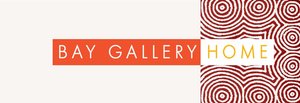Australian Aboriginal bush medicine is believed to have played a major part in the success of living off the continent’s landscape for more than 60,000 years. Much of the flora and fauna found on the huge landmass is unique. Across Australia, Aboriginal people developed bush medicine and used it to treat headaches, colds, skin infections and rashes, prevent pregnancy and cure many other ailments. Australia’s isolation meant it wasn’t subject to the devastating illnesses that stalked Europe.
Bush medicine is a testament to the profound interconnectedness of the indigenous communities to the ancient land they call home. The traditional healers also use spiritual realignment and smoking ceremonies using Eremophila longifolia (commonly known as the Berrigan emu bush) producing a smoke with significant antimicrobial effects when heated. Traditionally the ceremonies were to mark the birth of a baby, initiation and circumcision of boys. Deeply rooted in their rich cultural traditions and spiritual beliefs, this holistic healing practice thrived amidst the harsh and arid landscape.
Intergenerational sharing of knowledge is essential for bush medicinal practice being maintained. Traditionally this was passed on through stories and ceremonies, as well as practice. Since what Indigenous groups more commonly term the 'Invasion’ of Australia, it’s become increasingly important to document the knowledge due to the fractured communities, loss of access to sacred sites and the assault by mining companies on Aboriginal lands.
One of the ways of maintaining botanical knowledge is through art (in an earlier blog, we covered the Batik art movement which features important bush medicine and bush tucker stories). Another is Aboriginal-led initiatives like the social enterprise Bush Balms run from Purple House in Alice Springs. Purple House is an Aboriginal-owned and run charity specialising in dialysis for Aboriginals from remote desert communities. Bush medicines were brought to patients by mothers and grandmothers more than 20 years ago, with many being created by elders over the fire at the house. This practice was the genesis for Bush Balm.
When my mother was working as a nurse in Utopia (Tanami Desert 300km north east of Alice Springs) a dog bit her. My mother said a very old Aboriginal woman emerged from nowhere and slapped a gooey paste on her injured leg and muttered advice to keep it there. Outnursing the nurse, the balm healed the bite would without an infection or scarring developing.
Collaboration with bodies like the Imperial Bio Science Review, Australian Therapeutic Goods Administration (TGA) and Curtain University aids the safe development and distribution of bush medicine-based products, while also providing business opportunities through the sale of bush medicine products, tourism and horticulture.
Little wonder mega-pharmaceutical companies now circle indigenous communities and their bush knowledge.
Now, more than ever, it feels important that Aboriginal communities across Australia protect their botanical knowledge and connection to their land.
Aboriginal bush medicines include eucalyptus leaves, Kakadu plum, witchetty grubs, desert mushrooms, and snake vine.


